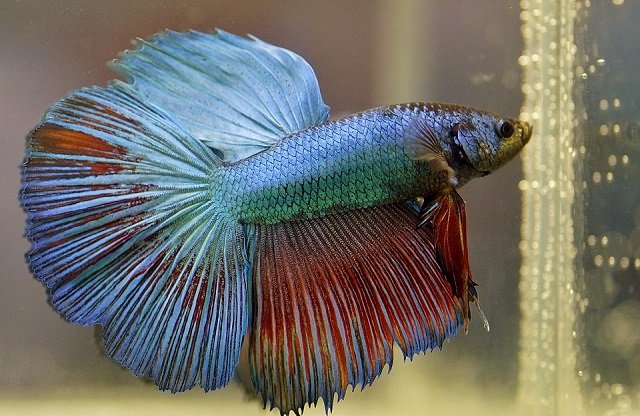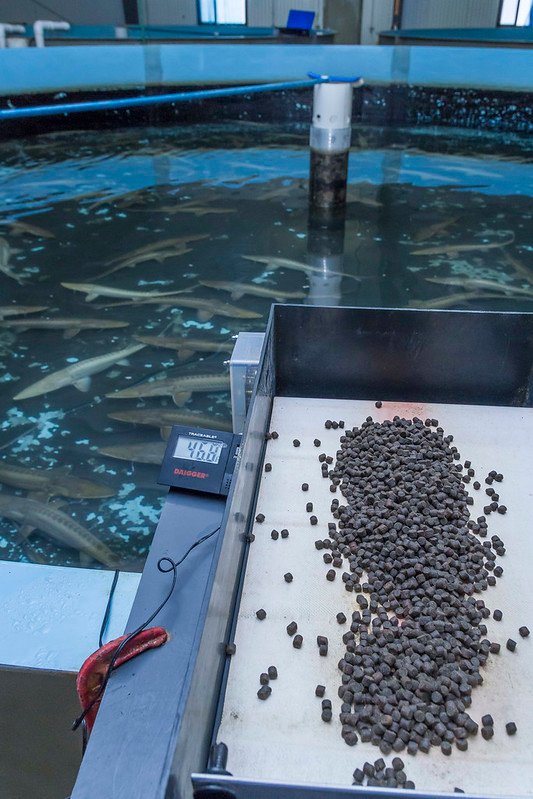
Bivalve aquaculture (mussels, oysters, clams, scallops) is a globally expanding sector, crucial for meeting the growing demand for seafood products. However, it faces significant challenges that limit its efficiency and profitability. One of the most pressing issues, although often underestimated and poorly understood, is fish predation. This phenomenon can cause devastating crop losses, in some cases making entire operations unviable.
Understanding the magnitude of the problem, the factors driving it, and potential solutions is vital for the industry’s sustainability. An article published by researchers from the University of Auckland reviews the current knowledge on the impact of predatory fish on the main groups of cultivated bivalves and critically evaluates potential mitigation strategies, based exclusively on a recent scientific review.
The Impact of Fish Predation on Bivalve Aquaculture
Fish predation is a problem reported worldwide across various bivalve species and farming methods, although its severity varies considerably. Bivalve farms, with their structures and high densities of organisms, can attract fish that find refuge and a concentrated food source there.
Mussels: The Main Target in Suspended Cultures
According to the study results, mussel aquaculture, especially using suspended systems (longlines), appears particularly vulnerable to fish predation. Suspended structures create complex habitats that attract diverse fish communities.
- Magnitude: Predation losses ranging from 54% to 100% of the harvest have been reported within days or weeks after seeding in regions like the Mediterranean and New Zealand. In Spain, predation reduced seed collection on collectors by up to 58%.
- Economic Impact: Economic losses are substantial, reaching millions of euros or dollars in key producing regions and limiting industry expansion.
- Culture Method: Suspended culture is much more susceptible than bottom culture, likely due to fish attraction to the three-dimensional structures.
- Vulnerable Stages: The most critical stages appear to be initial seeding and re-seeding (interseeding), when mussels are small (typically < 30-40 mm) and handling activities can attract fish. Very small (< 2 mm) and larger mussels seem to have a size refuge.
- Key Predators: Although variable, the Sparidae family (seabream or porgies), such as the gilthead seabream (Sparus aurata) in the Mediterranean and the Australasian snapper (Chrysophrys auratus) in New Zealand, are the main suspects and often confirmed. Their morphology allows them to crush hard shells. Labridae (wrasses) and Monacanthidae (filefish) have also been implicated.
Oysters: Variable Vulnerability Depending on the System
Fish predation can also be devastating in oyster farming, although the protection offered by some methods can mitigate the risk.
- Magnitude: Losses can reach 100% in unprotected sites, especially shortly after seeding. Even in sites with some protection, losses can be significant.
- Economic Impact: Farm closures and million-dollar annual losses have been reported in the Mediterranean. In Louisiana (USA), more than half of oyster leases report significant predation losses.
- Culture Method: Unprotected bottom culture is extremely vulnerable. Suspended culture in bags, cages, or mesh offers good protection. Nursery stages in closed systems (e.g., FLUPSYs) also exclude fish.
- Vulnerable Stages: Early stages, especially newly seeded juveniles (< 30 mm), are the most susceptible. Stress during seeding can attract predators. There is a possible size refuge for very small and very large oysters.
- Key Predators: Vary geographically. Sciaenidae (drums) like the black drum (Pogonias chromis) in the USA, and Sparidae like the gilthead seabream (S. aurata) and black seabream (Acanthopagrus schlegelii) in the Mediterranean and Japan. Batoids (rays) like the cownose ray (Rhinoptera bonasus) are also important predators, especially in restoration projects.
Clams: A Problem Mitigated by Technology
Historically, fish predation was a problem in clam aquaculture, but advances in farming practices, such as the widespread use of protective netting and enclosed structures, have significantly reduced its current incidence.
- Historical Magnitude: Initially, methods like direct unprotected seeding resulted in losses of up to 99% (e.g., geoduck) or 90% (e.g., hard clam). Giant clams (Tridacna) also suffered severe attacks before cages were used.
- Additional Impact: Benthic fish can practice “siphon cropping,” affecting growth and survival without consuming the entire clam.
- Culture Method: Bottom culture protected with mesh is now the norm and is very effective against fish. Suspended culture is less common.
- Vulnerable Stages: Seeding and thinning, when there is human intervention and clams are small (e.g., < 100-200 mm for Tridacna, < 13 mm for geoduck), were the times of greatest risk.
- Key Predators: Mainly benthic fish. Pleuronectidae (flounders, soles), Embiotocidae (surfperches), Labridae (wrasses), Lethrinidae (emperors), and Batoids (rays) have been identified.
Scallops: Generally Protected, but with Weak Points
Compared to other bivalves, the impact of fish predation on scallop aquaculture is generally lower, thanks to the widespread use of enclosed culture systems like lantern or pearl nets.
- Magnitude: Although generally low, problems have been reported on seed collectors and in unprotected culture experiments (“ear hanging” or bottom seeding), with losses potentially reaching 100% or 14%, respectively.
- Culture Method: Lantern or pearl nets are very effective for physical exclusion. “Ear hanging” and bottom culture (sea ranching) are much more vulnerable.
- Vulnerable Stages: Size seems more critical than the stage. Small scallops (spat and juveniles, e.g., < 55 mm) are more susceptible if exposed.
- Key Predators: Few studies, but Labridae (wrasses like Labrus bergylta and Achoerodus viridis), Monacanthidae (filefish), and Anarhichadidae (wolffish) have been identified.
Potential Strategies to Mitigate Fish Predation
Given the magnitude of the problem, especially for mussels and oysters, exploring and implementing mitigation strategies is crucial. The scientific review identifies four main categories:
Stay Always Informed
Join our communities to instantly receive the most important news, reports, and analysis from the aquaculture industry.
Physical Exclusion
Using physical barriers (mesh, nets, bags, cages) to prevent fish access to bivalves.
- Effectiveness: Very high, potentially 100% effective if designed and implemented correctly. Already the basis for success in much of the farming of clams, scallops, and oysters in closed systems.
- Disadvantages: High installation and maintenance costs, biofouling issues (requiring cleaning and potentially affecting water flow), and implementation difficulty in open systems like mussel longlines.
- Applicability: Could be viable for protecting early, vulnerable stages (e.g., mussel nurseries) even in suspended systems.
Deterrence (Non-Physical Exclusion)
Using stimuli to generate avoidance responses in fish. Generally reduces, but does not eliminate, the problem, and there is a risk of habituation. Effectiveness heavily depends on the target species, environmental conditions (turbidity, light, current), and system design.
- Visual Deterrents:
- Lights (continuous, strobe, laser): Variable effectiveness, best with strobe lights, but influenced by turbidity and ambient light. No recorded use in bivalve aquaculture.
- Bubble Curtains: Create a visual, acoustic, and hydrodynamic barrier. Potentially useful in shallow, low-turbidity sites, but costly and variably effective depending on conditions and species. Not currently used in bivalve farming.
- Acoustic Deterrents: Use sound (specific frequency and intensity) to repel fish. Useful where visibility is low. Effectiveness depends on the target species’ hearing and site conditions (depth, bottom). An attempt was made in France with oysters, but fish habituated. Requires more research.
- Electrical Barriers: Generate electric fields that repel fish. Used to guide fish in rivers or protect water intakes. Variable effectiveness (species, water conductivity). Have proven effective (60-100%) against rays in oyster farming. Limitations: need for constant power, corrosion in long-term use, high electricity consumption in saltwater.
- Chemicals (Toxins, Pheromones, Gases, Metals, Salts): Although some chemicals can repel fish, their use in aquaculture is highly problematic due to risks to non-target species, the ecosystem, and food safety. Specific pheromones could be an exception but require research.
- Magnetic Fields: Affect fish with electroreceptors (elasmobranchs, eels, some others). Investigated for reducing bycatch. No reports of use in bivalve aquaculture, and it’s unclear if it affects major predators (e.g., sparids, sciaenids).
Predator Removal
Actively eliminating predatory fish from the farming area.
- Effectiveness: Can be effective short-term (e.g., removal of Pogonias chromis increased oyster survival).
- Disadvantages: Very costly, labor-intensive, raises ethical and ecological concerns, and is often unsustainable long-term as fish can return. Generally considered the least desirable option.
Changes in Husbandry Practices
Modifying existing farming techniques to reduce vulnerability.
- Protected Nursery: Growing spat to a larger, less vulnerable size in protected systems (e.g., land- or sea-based FLUPSYs) before final site seeding. Already common in oysters and clams, and successfully tested with mussels. Requires investment and optimization.
- Equipment Modification: Using more resistant materials for mesh or “socks” holding mussels. Increasing the structural complexity of culture ropes or substrates to offer physical refuge.
Environmental Considerations and Decision-Making
When choosing a mitigation strategy, effectiveness and cost must be considered alongside potential environmental impacts.
- Physical exclusion structures can favor invasive biofouling species and generate plastic debris if damaged.
- Deterrents (light, sound, electricity) must be carefully evaluated to avoid long-term harm to the sensory systems or behavior of target and non-target species. Acoustic pollution is a particular concern with sonic deterrents.
- Chemicals and removal have obvious negative ecological and social implications.
A decision framework is proposed that evaluates predation risk (considering bivalve value, production stage, sensitivity, production cost) against the effectiveness, cost, and environmental impact of mitigation. Mitigation will not always be cost-effective, especially for low-value species or less vulnerable stages.
Conclusion and Future Perspectives
Fish predation is a real and economically significant threat to global bivalve aquaculture, although detailed understanding is still limited. Suspended cultures, particularly of mussels, and post-seeding juvenile stages are especially vulnerable. Families like Sparidae and Sciaenidae are key predators in many systems.
While physical exclusion is effective where applicable, deterrence strategies and husbandry modifications (like widespread use of nurseries) offer promising alternatives that require more research and development. Correctly identifying local predatory species and the most critical stages is fundamental for designing specific and cost-effective solutions. More research is needed to quantify actual losses, confirm predators, and rigorously test the long-term effectiveness and sustainability of various mitigation strategies, always considering economic and ecological balances. Addressing this challenge is key to improving efficiency and ensuring the sustainable growth of the bivalve aquaculture industry.
Contact
Rebecca L. Stobart
Institute of Marine Science, University of Auckland
Auckland, New Zealand
Email: r.stobart@auckland.ac.nz
Reference (open access)
Stobart, R. L., Jeffs, A. G., & Skelton, B. M. (2025). Fish Predation in Bivalve Aquaculture: Impacts and Potential Mitigation Strategies. Reviews in Aquaculture, 17(3), e70028. https://doi.org/10.1111/raq.70028
Editor at the digital magazine AquaHoy. He holds a degree in Aquaculture Biology from the National University of Santa (UNS) and a Master’s degree in Science and Innovation Management from the Polytechnic University of Valencia, with postgraduate diplomas in Business Innovation and Innovation Management. He possesses extensive experience in the aquaculture and fisheries sector, having led the Fisheries Innovation Unit of the National Program for Innovation in Fisheries and Aquaculture (PNIPA). He has served as a senior consultant in technology watch, an innovation project formulator and advisor, and a lecturer at UNS. He is a member of the Peruvian College of Biologists and was recognized by the World Aquaculture Society (WAS) in 2016 for his contribution to aquaculture.



